At the beginning of every International Art Exhibition at the Venice Biennale – distinct from all the collateral events and art shown in the national pavilion – is a large piece of wall text that explains the year’s theme – and boasts about how many countries are represented by the artists in the exhibition. It feels like a challenge: do you dare to doubt this exhibition’s relevance when it represents work from so many different places? It’s as though it seeks to neuter any criticism with accusations of parochialism. This year, the curator has plucked works by 213 artists from 58 countries. How do you like them apples?
In one sense, the numbers are hard to avoid. The exhibition is spread out over two buildings, the Central Pavilion in the Giardini at the east end of Venice and the old Arsenale, the enormous building that is almost impossible to fathom on account of its height and length. When you’re working on this scale you need to go big or go home. The numbers at least testify to a version of thinking big.
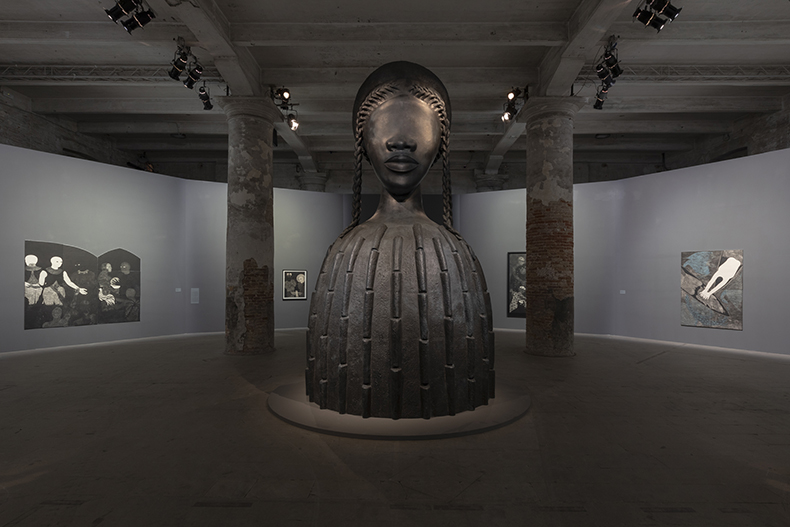
Brick House (2019), Simone Leigh. Photo: Roberto Marossi; courtesy La Biennale di Venezia
This year’s curator, Cecilia Alemani, has not been shy about the fact that the Venice Biennale’s 59th International Art Exhibition is focussing on women and giving voice to those who haven’t been heard. So far, so predictable; and none of it necessarily brings joy to the soul. Yet, what is clear from the first room in the Central Pavilion, and especially from the first room in the Arsenale, is that Alemani has curated a powerful, strong statement about both contemporary art and the world we live in – and she has done it with a keen eye for the theatrical, the striking and the compelling. Will there ever be a more powerful entrance to an exhibition than approaching the Arsenale to be confronted by Simone Leigh’s Black House surrounded by Belkis Ayón’s La Consagración I, II and III? It seems to capture the presiding spirit of the entire show: this is no dull walk-through modish themes, but a curatorial masterclass that offers a clear argument and, work by work, enriches it as you progress through the exhibition. The same theatricality is powerfully present in the opening to the Central Pavilion with Katharina Fitsch’s Elefant/Elephant, the perfect representation of a taxidermied elephant in a shade of deep green from 1987 that both alluded to the past and – as female elephants always lead their herd – a gynocentric future.
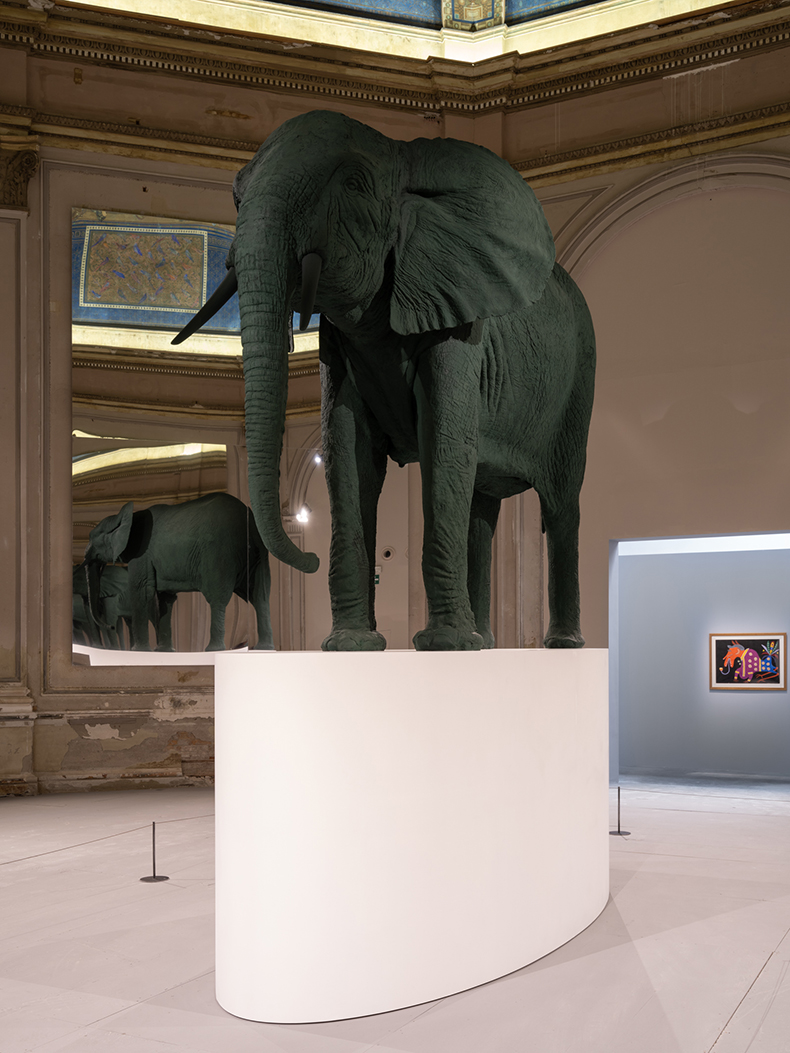
Elefant / Elephant (1987), Katharina Fritsch. Photo: Marco Cappelletti; courtesy La Biennale di Venezia
One particularly beautiful moment that reveals the strength of Alemani’s technique takes place in the Arsenale. The second room leads the viewer from the works of Célestin Faustin to Myrlande Constant. These two Haitian artists both explore the Vodou religion, the first through psychedelic dreamscapes, the second through flags of extraordinary intricacy that are themselves religious objects. Each flag by Constant is made up of hand-beaded scenes that merge contemporary Haitian culture with the Vodou religion. Mythical beings and demi-gods sit alongside altars and buildings. They are a glimpse into a culture that is so often overlooked in a Euro-centric perspective, the bold fluidity of Haitian lore where pagan ritual and uncertain identities meet is something that is, normally, left out of sight.
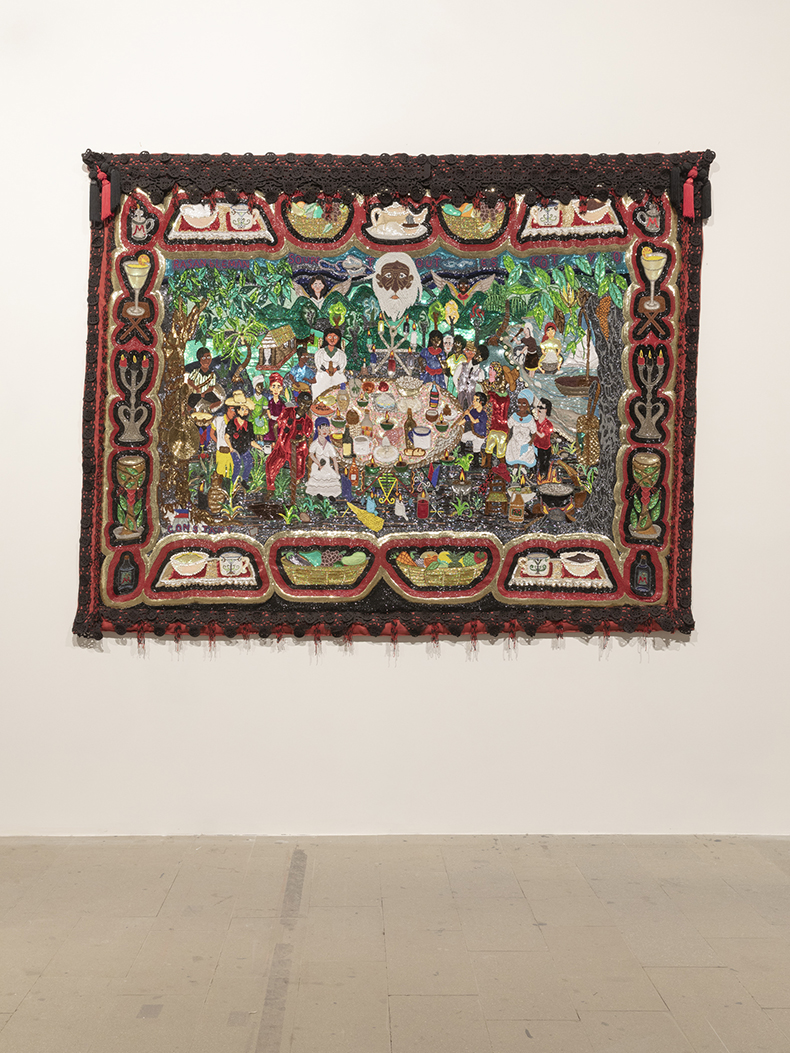
Sirenes (2020), Myrlande Constant. Photo: Roberto Marossi; courtesy La Biennale di Venezia
Next to these works is the first capsule exhibition in the Arsenale. Secreted within the exhibition, Alemani has curated five rooms dedicated to women Surrealist artists that offer a variety of viewpoints. Alemani shows that the concerns of her exhibition are not, in fact, all new but this interest in the body, in transformation and identity is the lingua franca of art history. Yet she also uses them to focus in on specific themes that shape the rest of her presentation from contemporary artists. This is particularly true of the last capsule presentation that explores the cyborg in early 20th-century art, setting up an exploration of art that goes beyond the human body and the human body’s relationship with technology. But before we get there let us return, for a moment, to this near perfect moment in the fourth capsule exhibition titled, ‘A Leaf a Gourd a Shell a Net a Bag a Sling a Sack a Bottle a Pot a Box a Container’. As with all the capsules, this very specific meditation on a particular aspect of women artists’ practice would not look out of place as an exhibition in its own right. By the entrance to this space, in a glass box, is a work by Sophie Taeuber-Arp. It is called Geometric Forms and looks not unlike an old purse. This small pouch is small and decorated in a pattern made up of beads. Through the back of the glass box it looks upon Constant’s beaded flags and with that careful positioning Alemani introduces an internationalism into the conversation that is not just alive and enriching, but also suggests that the past and the present stand next to each other.
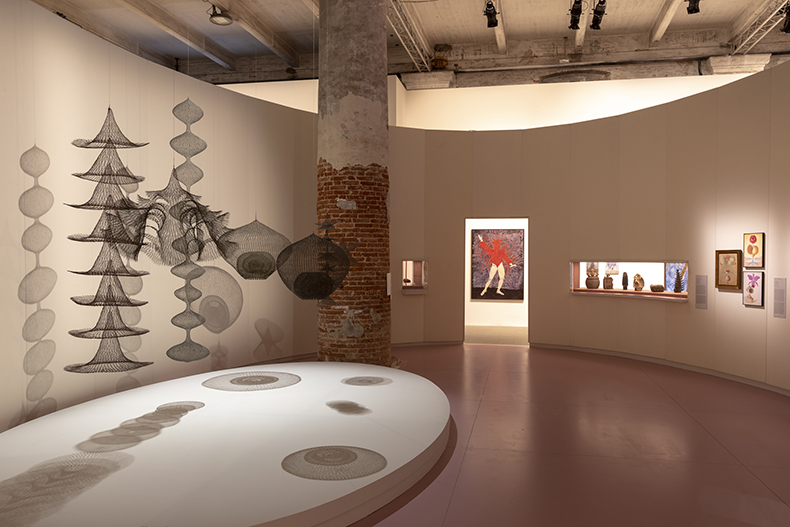
‘A Leaf a Gourd a Shell a Net a Bag a Sling a Sack a Bottle a Pot a Box a Container’ Photo: Roberto Marossi; courtesy La Biennale di Venezia
Not everything shown in the exhibition is a triumph, however. The inclusiveness does sometimes extend too far, and I remain perplexed by what Barbara Kruger’s work was doing near the end of the Arsenale. The work itself is enticing, but it seemed an odd fit within the context of cyborgs that had so clearly been explored up to that point, especially coming after the deeply unnerving Missing Person, Cyborg by Lynn Hershman Leeson that shows a portrait of an AI persona printed on a mirror, a construct of naturalism that is entirely unnatural.
But there are treasures and discoveries. Chiara Enzo’s tempera works carefully capturing the world in precise small form and Britta Marakatt-Labba’s embroideries that detail the history of the Sami people both deserve particular attention. In their subtle way, they are making profound statements about observation and representation that seems to reach to the heart of what Alemani is saying about contemporary art.
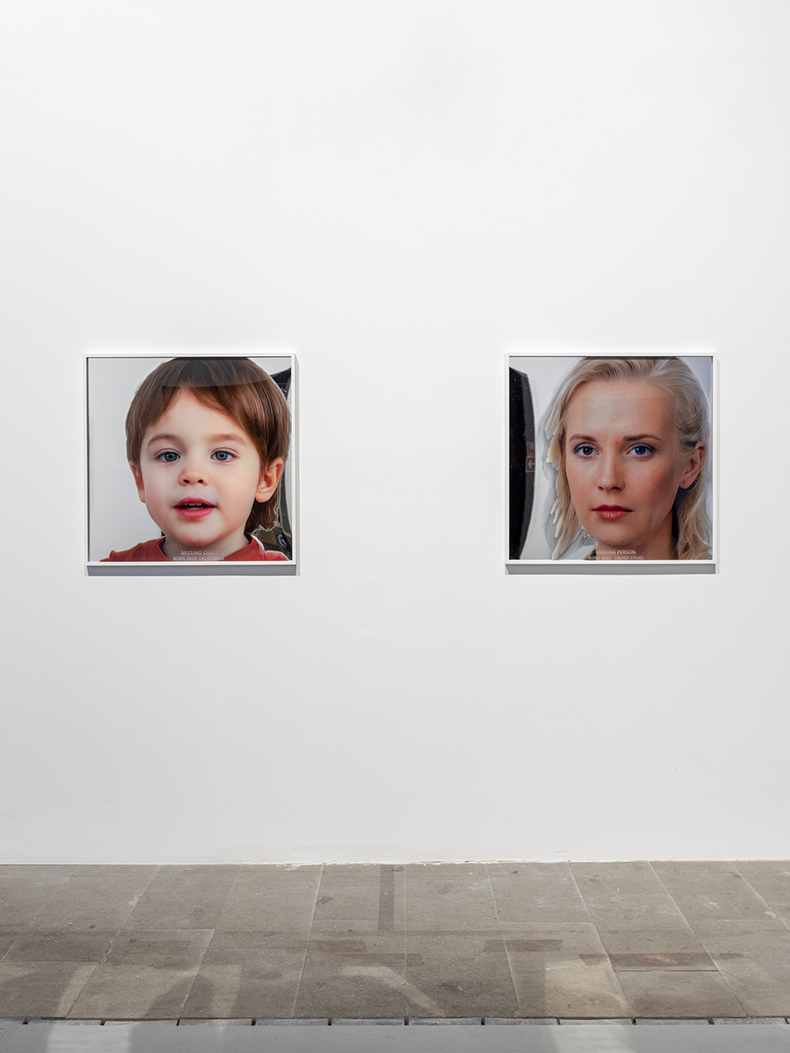
Missing Person, Cyborg, (2021), Lynn Hershman Leeson Photo: Roberto Marossi; courtesy La Biennale di Venezia
Much of what went on within the exhibition seemed to allude to specific installations around Venice. Marakatt-Labba’s embroidery couldn’t help but refer to the Sami pavilion. While the extraordinary and wonderful Polish pavilion’s work by Małgorzata Mirga-Tas, “Re-enchanting the World” – a history of the Romani people told through embroidery felt – aligned with Alemani’s mission, it also felt allusive through contrast. Anselm Kiefer’s enormous installation in the Doge’s Palace was in some sense diminished by its reliance on bombast when the artists in ‘Milk of Dreams’ made the case for finding art in the small stuff.
Yet, outside of the official Biennale, was an exhibition at Palazzo Loredan that was breath-taking in its relationship to art history and confrontation with the past. Markus Lüpertz has made something of a project exploring the past and borrowing the influences he wants to create a new voice of painting. The recent paintings displayed in this exhibition at the heart of Venice show how compelling that project can be. Works such as Bacchus and Iphigenie (Märkisch), Suzanne (Märkisch) and Satyr + Nymph II show an artist revisiting an idea and continuously finding something new to say about it. His paint moves from tight-knit work to looser gestures and his reshaping of the classical figures takes on a pressing contemporary insistence. Amid the grandeur of Palazzo Loredan there is something forceful in seeing the present and the past meet in such engrossing works.
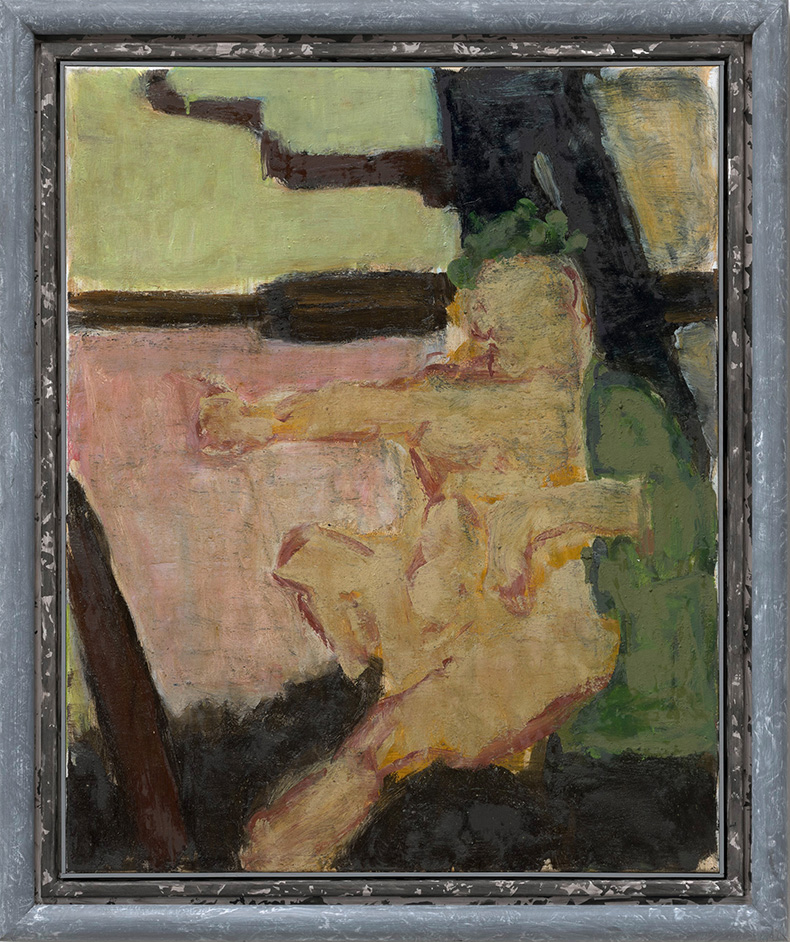
Bacchus (2020), Markus Lüpertz. © Markus Lüpertz. Courtesy Michael Werner Gallery, New York, London and Berlin
Of course, this meeting of the past and present is inflected through every aspect of Alemani’s exhibition. It is at its most explicit in a series of scientific studies of insects and plants by Maria Sybilla Merian. This 18th-century scientist, artist and illustrator used her art in pursuit of enquiry rather than expression and yet the vibrancy of the colour and attentiveness of her eye that is rendered visible in her works shows just how bracing an encounter with the past can be.
What ‘Milk of Dreams’ has achieved is broadening the scope of what is included in a survey of contemporary art in a way that is enthralling and meticulously detailed. But more than that, this exhibition has definitively shown how the labels of progressive politics with which art is so frequently allied needn’t be rudimentarily applied. It shows how a broader scope is a path to a broader mind and shows that inclusivity travels far beyond the tokenistic to be something searchingly and alluringly profound.
The 59th edition of the Venice Biennale runs until 27 November 2022.













![Masterpiece [Re]discovery 2022. Photo: Ben Fisher Photography, courtesy of Masterpiece London](http://zephr.apollo-magazine.com/wp-content/uploads/2022/07/MPL2022_4263.jpg)
‘Like landscape, his objects seem to breathe’: Gordon Baldwin (1932–2025)